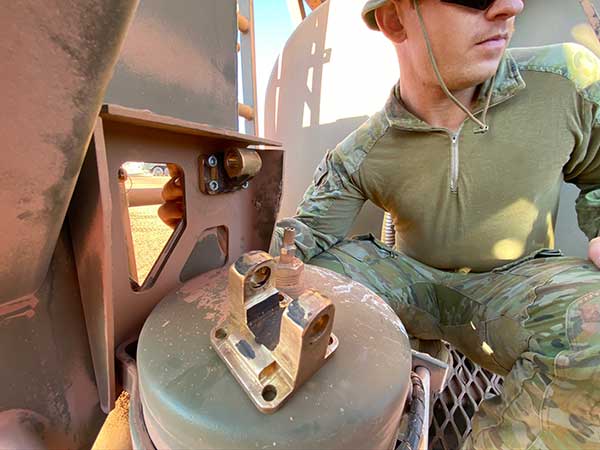The Australian Army has now completed a successful two-week field trial of a WarpSPEE3D metal 3D printer at the Mount Bundey Training Area, Northern Territory.
A team of Royal Australian Electrical and Mechanical Engineers (RAEME) soldiers from 1st Combat Service Support Battalion (1CSSB) overcame extreme conditions to design, print and finish a series of 3D printed parts in the field as case studies.
The trial proves metal 3D printing enabled, by appropriate technical documentation and engineering processes, can support the Army’s supply chain resilience and strengthen Australia’s sovereign capability.
Developed by SPEE3D, Australian manufacturer of metal additive manufacturing technology, WarpSPEE3D is a large-format metal 3D printer that uses cold spray technology.
The printer is capable of printing large metal parts up to 40 kg at a speed of 100 grams per minute. The process harnesses the power of kinetic energy, rather than relying on high-power lasers and gases, allowing 3D metal printing in the field, affordably.
Prior to the trial, the team conducted 3D printing training at Charles Darwin University, teaching them the skills they need to design, print, heat treat, machine, test and install metal parts that may fail in the field and can be difficult to replace with existing supply chains.
In one of the case studies during the trial, the team printed a Gunner’s ratchet. This specialized multitool is currently used by defense in the service of the M242 Australian Light Armoured Vehicle Machine Gun.
During the trial it was proven that the ratchet can be easily replaced on demand and in the field with a version designed by 1CSSB personnel. The 1CSSB design was 3D printed in under an hour and with a material that costs approximately $100.
Following success with the ratchet, 1CSSB designed and printed an essential metal mounting bracket on the bulk fuel support module, which was not in the field supply inventory. The part took 30 minutes to prints.
These case studies, along with over 40 others developed during the program, will now form a digital library to be accessed and printed on demand.
This trial proved the Australian Army are effectively able to supplement existing supply chains and connect the skills of the soldiers and a sovereign industry capability to be ready now and future ready.
“Custom made parts, designed and printed in the field, means we can provides the mechanism for our people to get equipment back into action quickly and return it to its primary role on the battlefield,” Commanding Officer of 1CSSB, Lieutenant Colonel Kane Wright says. “It was great to see the team working together to think of new ways to use the 3D printer, it demonstrated the many hidden talents Australian soldiers possess.
Sources: Press materials received from the company and additional information gleaned from the company’s website.
About the Author
Press releases may be sent to them via [email protected]. Follow Robotics 24/7 on Facebook
Follow Robotics 24/7 on Linkedin
Article topics
Email Sign Up
















